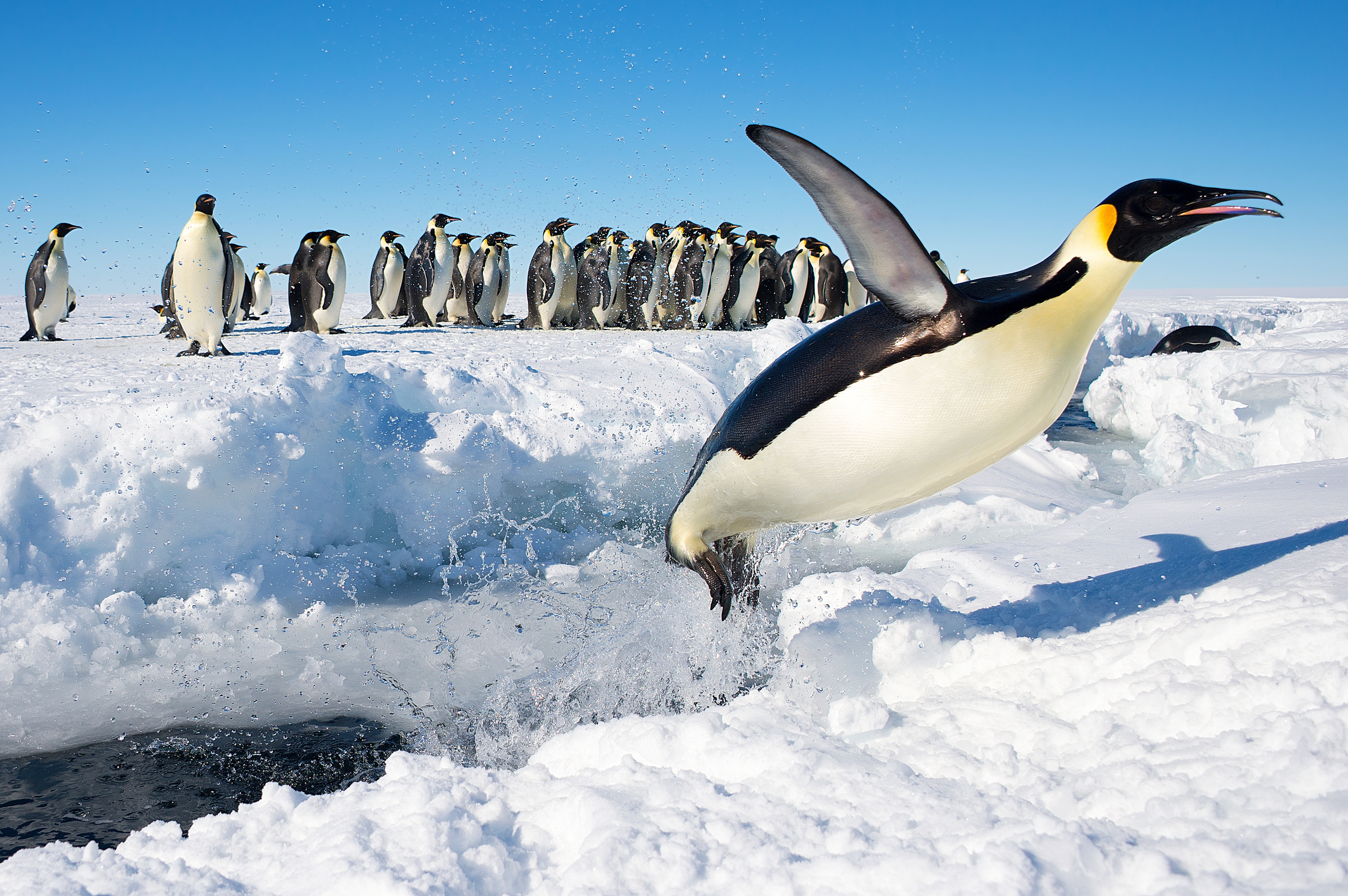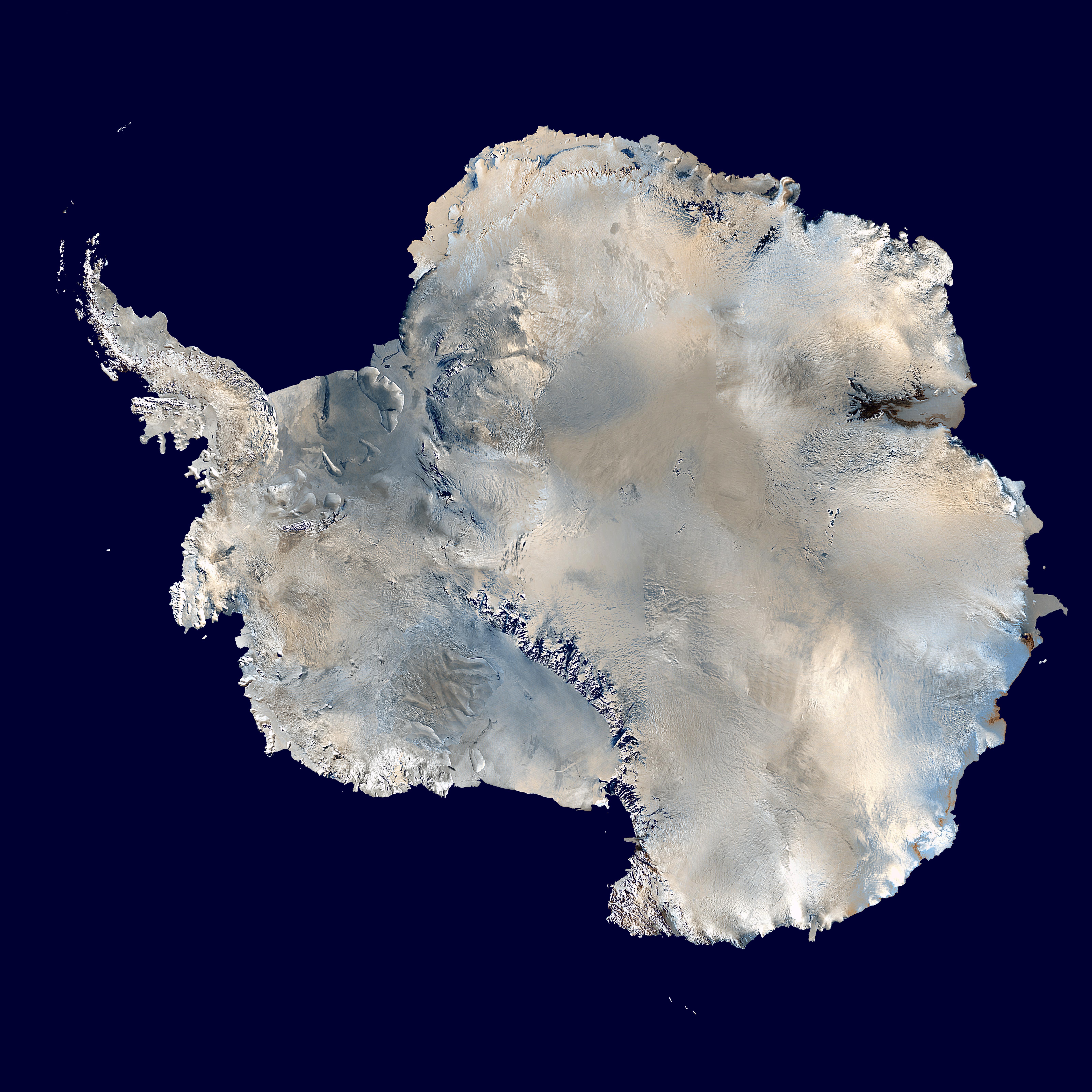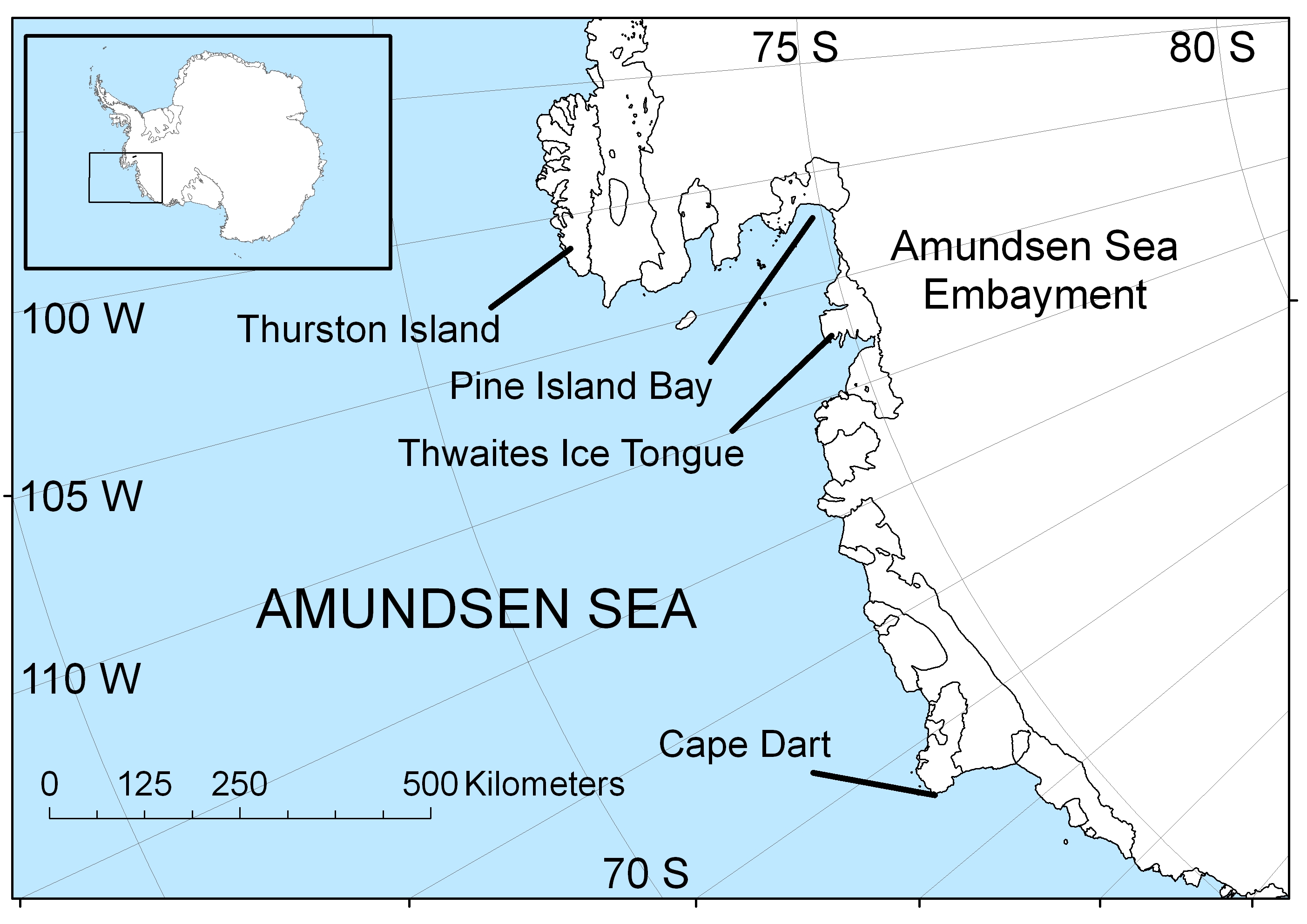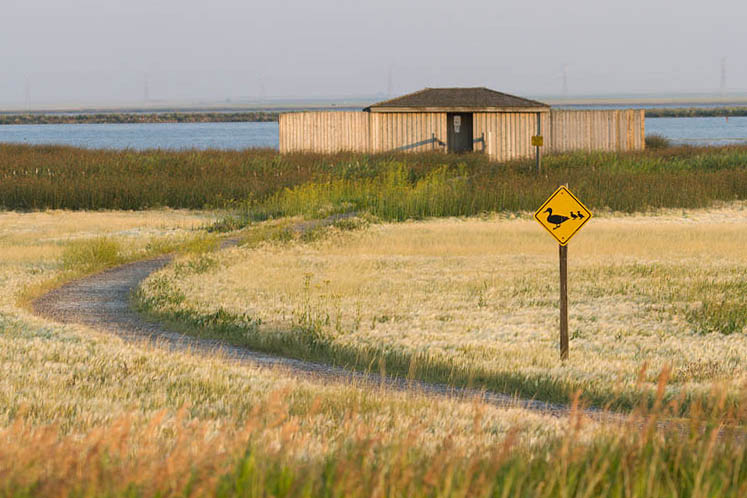|
Hummer Point
Hummer Point is the eastern point of the ice-covered Gurnon Peninsula, an eastern arm of Bear Peninsula, on the Walgreen Coast of Marie Byrd Land, Antarctica, extending into the Amundsen Sea. Discovery and naming The headland was mapped by the United States Geological Survey from surveys and U.S. Navy aerial photographs from 1959 to 1966, and was named by the Advisory Committee on Antarctic Names in 1977 after Dr Michael G. Hummer. Important Bird Area A 490 ha site on fast ice east of the headland has been designated an Important Bird Area (IBA) by BirdLife International BirdLife International is a global partnership of non-governmental organizations that strives to conserve birds and their habitats. BirdLife International's priorities include preventing extinction of bird species, identifying and safeguarding ... because it supports a breeding colony of about 9,500 emperor penguinss, estimated from 2009 satellite imagery. References Important Bird Areas of ... [...More Info...] [...Related Items...] OR: [Wikipedia] [Google] [Baidu] |
Gurnon Peninsula
Bear Peninsula () is a peninsula about 80 km (50 mi) long and 40 km (25 mi) wide which is ice covered except for several isolated rock bluffs and outcrops along its margins, lying 48 km 30 mi) east of Martin Peninsula on Walgreen Coast, Marie Byrd Land, Antarctica. First delineated from aerial photographs taken by USN Operation Highjump in January 1947. Named by the Advisory Committee on Antarctic Names (US-ACAN) after the ice-ship ''USS Bear'', flagship of the USAS, from which three reconnaissance flights were made in late February 1940, resulting in the discovery of Walgreen Coast (with probable sighting of this feature) and the Thurston Island area. This ship, under the name Bear of Oakland, also served as flagship of the Byrd AE, 1933–35, which based at the Bay of Whales, Ross Ice Shelf. Launched in 1874 at Greenock, Scotland, for use in the sealing trade, she sank in 30-foot seas and high winds in the North Atlantic, March 19, 1963, at which ... [...More Info...] [...Related Items...] OR: [Wikipedia] [Google] [Baidu] |
Walgreen Coast
The Walgreen Coast () is a portion of the coast of Antarctica between Cape Herlacher and Cape Waite, or between Eights Coast on the east and Bakutis Coast in the west. It is part of Marie Byrd Land. It extends from 103°24'W to 114°12'W. It was discovered by Richard E. Byrd and members of the US Antarctic Service (USAS) by flights from the USS ''Bear'' during February 1940. The Walgreen Coast was named by Byrd after Charles R. Walgreen, president of the retail company Walgreens at the time, who was a funder of the Byrd Antarctic Expedition, 1933–1935, and assisted in equipping the ''Bear'' for the USAS, 1939–1941. This coast was mapped in detail by the United States Geological Survey from ground surveys and U.S. Navy air photographs, 1959–66. It contains Thwaites Glacier, also known as the "Doomsday Glacier", for its major contributions to sea level rise as a result of climate change. See also *Wright Pass Wright Pass () is a snow pass to the west of Jones Bluffs, ... [...More Info...] [...Related Items...] OR: [Wikipedia] [Google] [Baidu] |
Marie Byrd Land
Marie Byrd Land (MBL) is an unclaimed region of Antarctica. With an area of , it is the largest unclaimed territory on Earth. It was named after the wife of American naval officer Richard E. Byrd, who explored the region in the early 20th century. The territory lies in West Antarctica, east of the Ross Ice Shelf and the Ross Sea and south of the Pacific Ocean portion of the Southern Ocean, extending eastward approximately to a line between the head of the Ross Ice Shelf and Eights Coast. It stretches between 158°W and 103°24'W. The inclusion of the area between the Rockefeller Plateau and Eights Coast is based upon Byrd's exploration. Overview Because of its remoteness, even by Antarctic standards, most of Marie Byrd Land (the portion east of 150°W) has not been claimed by any sovereign state. It is by far the largest single unclaimed territory on Earth, with an area of (including Eights Coast, immediately east of Marie Byrd Land). In 1939, United States President F ... [...More Info...] [...Related Items...] OR: [Wikipedia] [Google] [Baidu] |
Antarctica
Antarctica () is Earth's southernmost and least-populated continent. Situated almost entirely south of the Antarctic Circle and surrounded by the Southern Ocean, it contains the geographic South Pole. Antarctica is the fifth-largest continent, being about 40% larger than Europe, and has an area of . Most of Antarctica is covered by the Antarctic ice sheet, with an average thickness of . Antarctica is, on average, the coldest, driest, and windiest of the continents, and it has the highest average elevation. It is mainly a polar desert, with annual precipitation of over along the coast and far less inland. About 70% of the world's freshwater reserves are frozen in Antarctica, which, if melted, would raise global sea levels by almost . Antarctica holds the record for the lowest measured temperature on Earth, . The coastal regions can reach temperatures over in summer. Native species of animals include mites, nematodes, penguins, seals and tardigrades. Where ve ... [...More Info...] [...Related Items...] OR: [Wikipedia] [Google] [Baidu] |
Amundsen Sea
The Amundsen Sea, an arm of the Southern Ocean off Marie Byrd Land in western Antarctica, lies between Cape Flying Fish (the northwestern tip of Thurston Island) to the east and Cape Dart on Siple Island to the west. Cape Flying Fish marks the boundary between the Amundsen Sea and the Bellingshausen Sea. West of Cape Dart there is no named marginal sea of the Southern Ocean between the Amundsen and Ross Seas. The Norwegian expedition of 1928–1929 under Captain Nils Larsen named the body of water for the Norwegian polar explorer Roald Amundsen while exploring this area in February 1929. The sea is mostly ice-covered, and the Thwaites Ice Tongue protrudes into it. The ice sheet which drains into the Amundsen Sea averages about in thickness; roughly the size of the state of Texas, this area is known as the Amundsen Sea Embayment (ASE); it forms one of the three major ice-drainage basins of the West Antarctic Ice Sheet. Embayment The ice sheet which drains into the ... [...More Info...] [...Related Items...] OR: [Wikipedia] [Google] [Baidu] |
United States Geological Survey
The United States Geological Survey (USGS), formerly simply known as the Geological Survey, is a scientific agency of the United States government. The scientists of the USGS study the landscape of the United States, its natural resources, and the natural hazards that threaten it. The organization's work spans the disciplines of biology, geography, geology, and hydrology. The USGS is a fact-finding research organization with no regulatory responsibility. The agency was founded on March 3, 1879. The USGS is a bureau of the United States Department of the Interior; it is that department's sole scientific agency. The USGS employs approximately 8,670 people and is headquartered in Reston, Virginia. The USGS also has major offices near Lakewood, Colorado, at the Denver Federal Center, and Menlo Park, California. The current motto of the USGS, in use since August 1997, is "science for a changing world". The agency's previous slogan, adopted on the occasion of its hundredth an ... [...More Info...] [...Related Items...] OR: [Wikipedia] [Google] [Baidu] |
Advisory Committee On Antarctic Names
The Advisory Committee on Antarctic Names (ACAN or US-ACAN) is an advisory committee of the United States Board on Geographic Names responsible for recommending commemorative names for features in Antarctica. History The committee was established in 1943 as the Special Committee on Antarctic Names (SCAN). It became the Advisory Committee on Antarctic Names in 1947. Fred G. Alberts was Secretary of the Committee from 1949 to 1980. By 1959, a structured nomenclature was reached, allowing for further exploration, structured mapping of the region and a unique naming system. A 1990 ACAN gazeeter of Antarctica listed 16,000 names. Description The United States does not recognise territorial boundaries within Antarctica, so ACAN assigns names to features anywhere within the continent, in consultation with other national nomenclature bodies where appropriate, as defined by the Antarctic Treaty System. The research and staff support for the ACAN is provided by the United States Geolog ... [...More Info...] [...Related Items...] OR: [Wikipedia] [Google] [Baidu] |
Michael G
Michael may refer to: People * Michael (given name), a given name * Michael (surname), including a list of people with the surname Michael Given name "Michael" * Michael (archangel), ''first'' of God's archangels in the Jewish, Christian and Islamic religions * Michael (bishop elect), English 13th-century Bishop of Hereford elect * Michael (Khoroshy) (1885–1977), cleric of the Ukrainian Orthodox Church of Canada * Michael Donnellan (1915–1985), Irish-born London fashion designer, often referred to simply as "Michael" * Michael (footballer, born 1982), Brazilian footballer * Michael (footballer, born 1983), Brazilian footballer * Michael (footballer, born 1993), Brazilian footballer * Michael (footballer, born February 1996), Brazilian footballer * Michael (footballer, born March 1996), Brazilian footballer * Michael (footballer, born 1999), Brazilian footballer Rulers =Byzantine emperors= * Michael I Rangabe (d. 844), married the daughter of Emperor Nikephoro ... [...More Info...] [...Related Items...] OR: [Wikipedia] [Google] [Baidu] |
Penguin In Antarctica Jumping Out Of The Water
Penguins (order Sphenisciformes , family Spheniscidae ) are a group of aquatic flightless birds. They live almost exclusively in the Southern Hemisphere: only one species, the Galápagos penguin, is found north of the Equator. Highly adapted for life in the water, penguins have countershaded dark and white plumage and flippers for swimming. Most penguins feed on krill, fish, squid and other forms of sea life which they catch with their bills and swallow it whole while swimming. A penguin has a spiny tongue and powerful jaws to grip slippery prey. They spend roughly half of their lives on land and the other half in the sea. The largest living species is the emperor penguin (''Aptenodytes forsteri''): on average, adults are about tall and weigh . The smallest penguin species is the little blue penguin (''Eudyptula minor''), also known as the fairy penguin, which stands around tall and weighs . Today, larger penguins generally inhabit colder regions, and smaller penguins inh ... [...More Info...] [...Related Items...] OR: [Wikipedia] [Google] [Baidu] |
Fast Ice
Fast ice (also called ''land-fast ice'', ''landfast ice'', and ''shore-fast ice'') is sea ice that is "fastened" to the coastline, to the sea floor along shoals or to grounded icebergs.Leppäranta, M. 2011. The Drift of Sea Ice. Berlin: Springer-Verlag. Fast ice may either grow in place from the sea water or by freezing pieces of drifting ice to the shore or other anchor sites.Kovacs, A.and M. Mellor. 1974. "Sea ice morphology and ice as a geologic agent in the Southern Beaufort Sea." pp. 113-164, in: ''The Coast and Shelf of the Beaufort Sea'', J.C. Reed and J.E. Sater (Eds.), Arlington, Va.: U.S.A. Unlike drift (or pack) ice, fast ice does not move with currents and winds. The width (and the presence) of this ice zone is usually seasonal and depends on ice thickness, topography of the sea floor and islands. It ranges from a few meters to several hundred kilometers. Seaward expansion is a function of a number of factors, notably water depth, shoreline protection, time of ... [...More Info...] [...Related Items...] OR: [Wikipedia] [Google] [Baidu] |
Important Bird Area
An Important Bird and Biodiversity Area (IBA) is an area identified using an internationally agreed set of criteria as being globally important for the conservation of bird populations. IBA was developed and sites are identified by BirdLife International. There are over 13,000 IBAs worldwide. These sites are small enough to be entirely conserved and differ in their character, habitat or ornithological importance from the surrounding habitat. In the United States the Program is administered by the National Audubon Society. Often IBAs form part of a country's existing protected area network, and so are protected under national legislation. Legal recognition and protection of IBAs that are not within existing protected areas varies within different countries. Some countries have a National IBA Conservation Strategy, whereas in others protection is completely lacking. History In 1985, following a specific request from the European Economic Community, Birdlife International ... [...More Info...] [...Related Items...] OR: [Wikipedia] [Google] [Baidu] |





_21.jpg)
